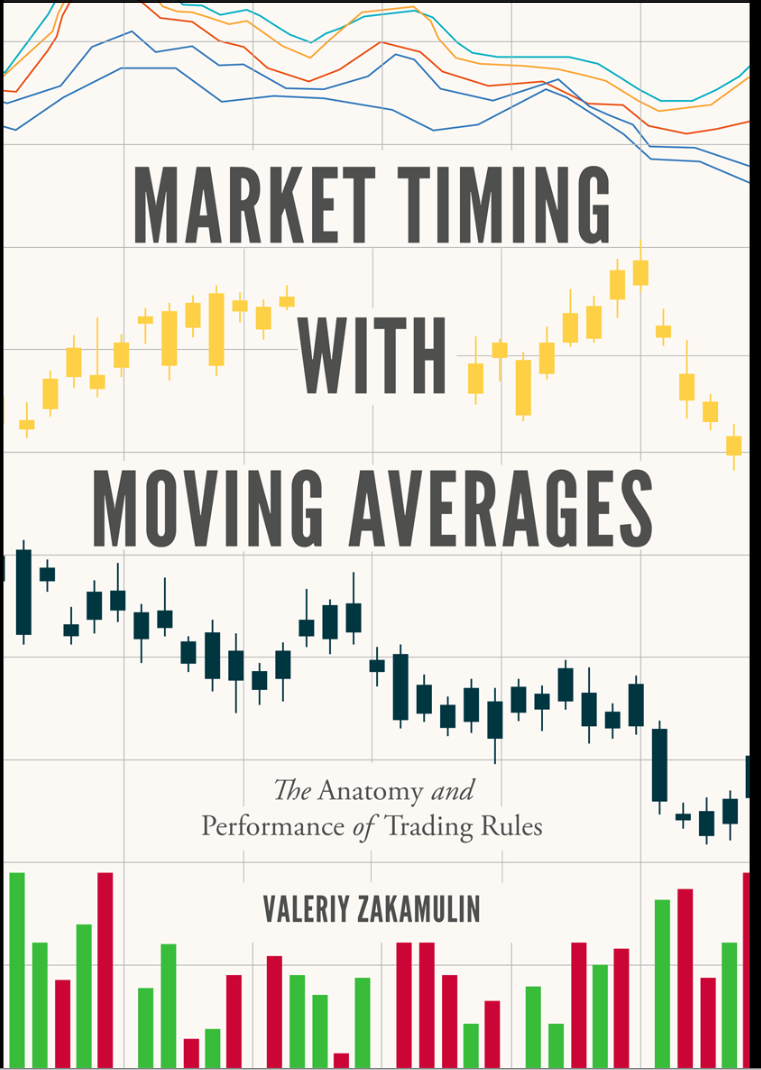Trend-following is something I’ve struggled with for years — always felt like voodoo magic and data-mining. That said, I finally came around to appreciating the practice after a ton of research replication efforts, independent research. At the time I was investigating the topic there really weren’t any references or books that gave me the depth of understanding that I was looking for. What I really wanted was the book that Valeriy Zakamulin has finally written: Market Timing with Moving Averages.
Market Timing with Moving Averages is nearly 300 pages of intense investigation into all things trend-following. If you are serious about considering the craft, you should seriously be considering purchasing this book.
- Valeriy Zakamulin
- The book can be found here.
- Want to see all our book reviews?
What do I like about the book?
There are many popular academics (Moskowitz, Ooi, and Pedersen) and bloggers (i.e., Gary Antonacci) with a solid grasp of trend-following rules. However, Valeriy is the expert’s expert when it comes to the details on trend-following rules. In fact, we were so impressed by the depth and scale of Valeriy’s knowledge on moving average rules, a few years ago, we labeled Valeriy the, “Moving Average Research King.” Valeriy’s new book only emphasizes that we were probably correct in our assessment.
Valeriy was kind enough to share an 8-part series on trend-following via our website. This mini-course is intense. Valeriy’s book takes this mini-course to a whole new level. Many people consider trend-following to be a dark art practiced by heretics, but this book will open the black-box and help anyone understand trend-following mechanics.
The book is broken down into 11 chapters. A brief summary of each chapter is described below:
- The basics of moving average trend-following rules: lag time and smoothness.
- Quantifying the average lag time and smoothness of a moving average.
- Details on many typical moving average rules (and some exotics) and the relationship between lag time and the identification of turning points in a price trend.
- The limitations of moving average rules and discussion and when they work.
- An anatomy of moving average rules, with a break down of these rules into a single weighted moving average of price changes.
- Transaction costs analysis and the relationship with moving average trend-following rules.
- How to quantify the benefits and/or costs of moving average trend-following rules.
- Data-mining and trend-following. An honest discussion into the problem with data-mining and how to correct the issues.
- Identifying which trend-following rules perform the best. This is the chapter that most investors will gravitate towards. The chapter also points out the advantages and disadvantages of moving average rules.
- Exploring trend-following across global asset classes. Again, more empirical analysis of how and where trend-following is most effective.
- The concluding chapter that summarizes the core findings and key takeaways from the book.
If you survive all 11 chapters with your sanity intact, you’ll be a better investor and will have certainly earned your “finance geek of the year” award. I really learned a lot from reading Valeriy’s book.
Constructive Criticism
This book is not for the faint of heart and is not recommended for beginners or those without a lot of motivation to learn. You will be challenged. You will get bored staring at math equations. You will want to set the book down. But you will learn more about moving averages!
Of course, while this book is fairly hardcore on the details and not an easy read, to be fair, this is spelled out up front.
In the author’s own words:
This book is not for a layman who believes that moving averages offer a simple, quick, and easy way to riches. This book is primarily intended for a serious and mathematically-minded reader who wants to get an in-depth knowledge of the subject…therefore, this ook is best suited for the reader with an MS degree in economics or business administration who is familiar with the basic concepts in investments and statistics.
Another small critique, which is really more of a personal preference, is the over-emphasis on the theory and mechanics of moving average rules. More balance across theory/empirics would have been nice. For example, I would have like to see more chapters like #9 and 10, where we get a deep dive in the empirical analysis and assessment of the rules.
Summary
We are big fans of Valeriy because he is a big fan of our mission: empower investors through education. When it comes to understanding moving average rules and trend-following overall, Valeriy is empowering investors to the full extent. In the dedication of the book, Valeriy states that the mission of his book is to, “help [investors] better understand the tools at their disposal.” We think he’s done a good job and recommend you check out his book. And if you are really looking for more intellectual punishment, head over to Valeriy’s website where he publishes his recent academic finance research on trend-following, portfolio optimization, volatility strategies, and much more. Truly a treasure trove of interesting research and insights.
Enjoy.
About the Author: Wesley Gray, PhD
—
Important Disclosures
For informational and educational purposes only and should not be construed as specific investment, accounting, legal, or tax advice. Certain information is deemed to be reliable, but its accuracy and completeness cannot be guaranteed. Third party information may become outdated or otherwise superseded without notice. Neither the Securities and Exchange Commission (SEC) nor any other federal or state agency has approved, determined the accuracy, or confirmed the adequacy of this article.
The views and opinions expressed herein are those of the author and do not necessarily reflect the views of Alpha Architect, its affiliates or its employees. Our full disclosures are available here. Definitions of common statistics used in our analysis are available here (towards the bottom).
Join thousands of other readers and subscribe to our blog.


